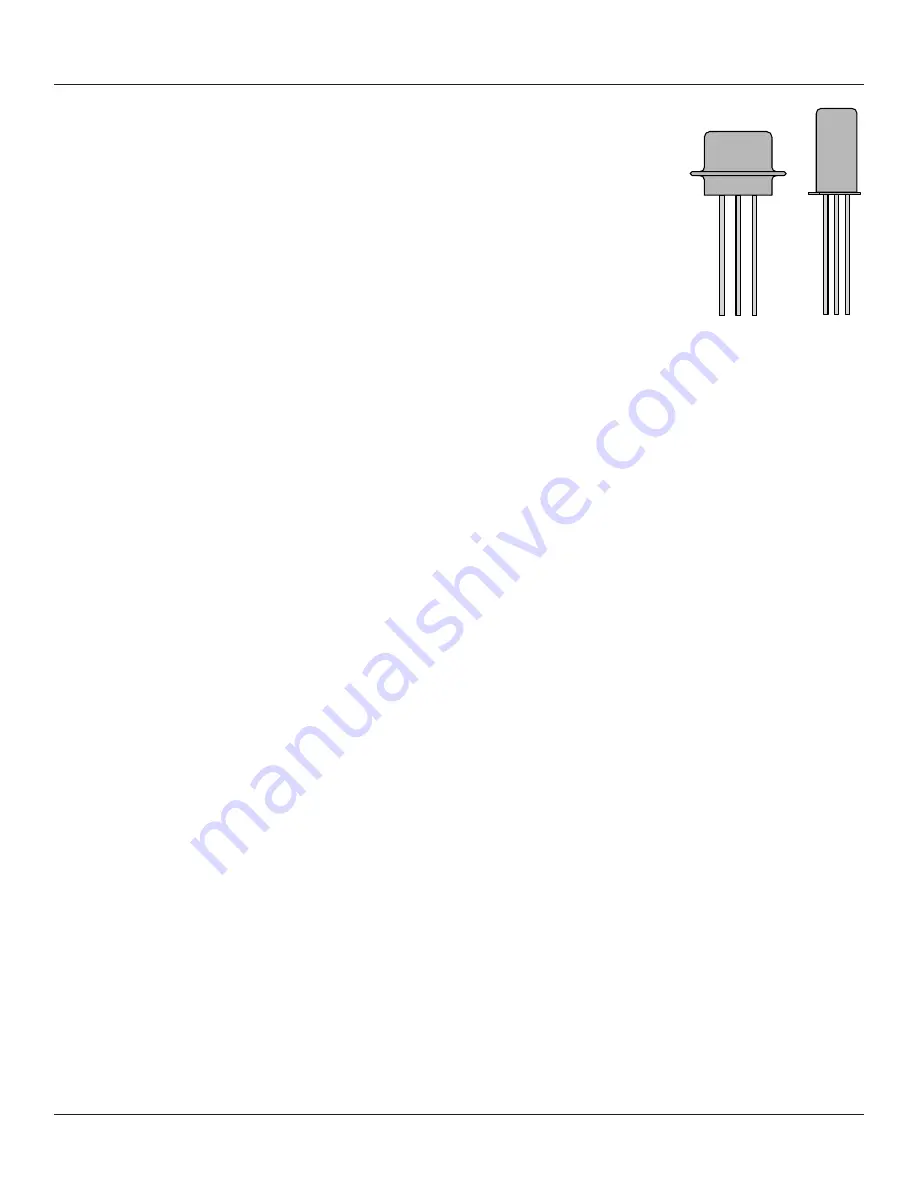
PHOBOS GERMANIUM FUZZ
17
GERMANIUM TRANSISTORS: INTRODUCTION
Next are the germanium transistors. These are very different than modern
electronic components, so they need an introduction before we cover how to
install them.
Silicon vs. germanium
Compared to silicon, germanium transistors are imprecise and inconsistent,
even among the same part number. As a result, when classic fuzz circuits use
germanium transistors, it’s not the part number that’s important, but the
specifications of the individual device. Two transistors of different part numbers
with identical gain and leakage will sound exactly the same. Conversely, not all
transistors of the same part number will work in a particular circuit.
Because of this, be aware that this kit may include any of several different part numbers. In this
document we will refer to them as Q1-Q3, not by specific part numbers such as AC125 or M
П
16
Б
.
Matching
The transistors included in the Phobos kit have been measured and matched for best performance in the
Tone Bender circuit. There are three bags labeled Q1, Q2 and Q3.
It is extremely important that the transistors are not removed from the bags
until it’s time to install
them, and only one at a time, to avoid inadvertently mixing them up. Q1 and Q2 are not always visually
distinguishable from each other, and outside of the bags there may be no way to tell which is which. The
pedal won’t sound right if the transistors are used in the wrong positions.
Temperature sensitivity
Germanium is a delicate semiconductor material and very sensitive to overheating. If the transistor is
overheated, it could be permanently damaged. It’s recommended to mount the transistors so they are
elevated above the PCB by about 3/8” (9.5mm) to allow some of the heat to dissipate before it reaches
the body of the transistor. If it takes longer than two seconds for the solder to form a good joint, move to
a different component and let the transistor cool a bit before trying again.
Old-stock precautions
Germanium transistors are not manufactured today except for some expensive industry-specific
applications, so nearly all of the germanium transistors used in guitar pedals are old-stock. The
transistors in this kit are 30 to 50 years old, sometimes even older.
While age has nothing to do with performance of the device itself, the leads may be corroded and solder
may not adhere well unless they are cleaned first. If you notice any corrosion on the leads, use medium-
grit sandpaper or a fine metal file to remove it, and ensure the leads are shiny before soldering.















































